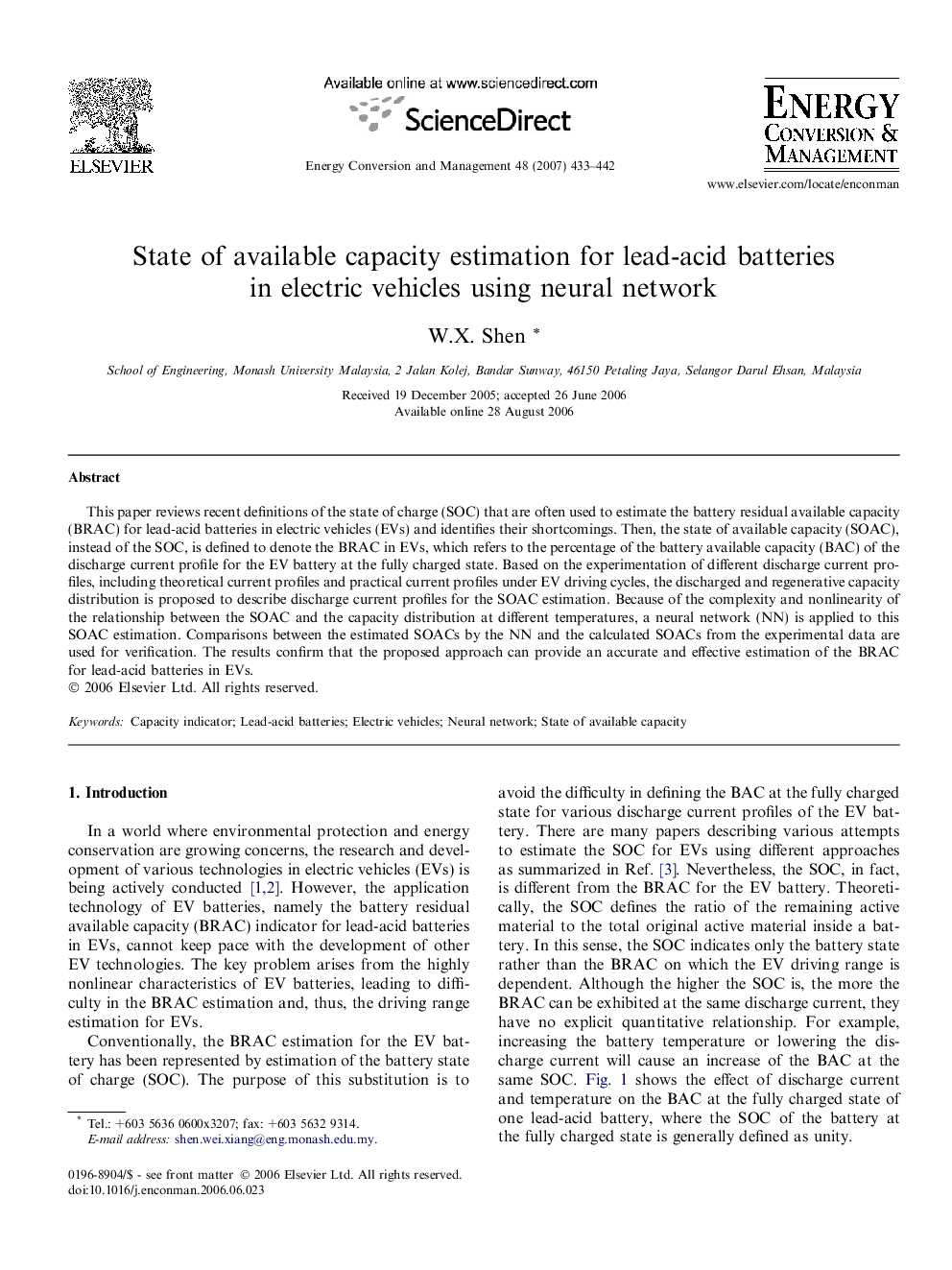| Article ID | Journal | Published Year | Pages | File Type |
|---|---|---|---|---|
| 773008 | Energy Conversion and Management | 2007 | 10 Pages |
This paper reviews recent definitions of the state of charge (SOC) that are often used to estimate the battery residual available capacity (BRAC) for lead-acid batteries in electric vehicles (EVs) and identifies their shortcomings. Then, the state of available capacity (SOAC), instead of the SOC, is defined to denote the BRAC in EVs, which refers to the percentage of the battery available capacity (BAC) of the discharge current profile for the EV battery at the fully charged state. Based on the experimentation of different discharge current profiles, including theoretical current profiles and practical current profiles under EV driving cycles, the discharged and regenerative capacity distribution is proposed to describe discharge current profiles for the SOAC estimation. Because of the complexity and nonlinearity of the relationship between the SOAC and the capacity distribution at different temperatures, a neural network (NN) is applied to this SOAC estimation. Comparisons between the estimated SOACs by the NN and the calculated SOACs from the experimental data are used for verification. The results confirm that the proposed approach can provide an accurate and effective estimation of the BRAC for lead-acid batteries in EVs.
